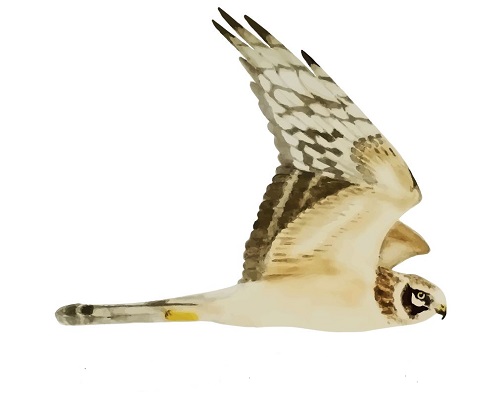Her på Skagen Fuglestations blog bringes korte nyheder i dagbogsformat om hændelser på fuglestationen.
Orcas
Last night, once again, Simon and Benjamin stayed up all night with several interested guests, hoping to catch either storm petrels (stormsvale) or nightjar (natravn), however, again they were unlucky. The weather forecast has, once again, fooled us quite a bit. It did not rain at all at night, so the promised good conditions did not happen, unfortunately. Mind you, tonight, the rain has come and will probably stop before the nets are set up, so, who knows, maybe, finally we will get lucky again...
Sean and I got up at 3 am, while the others closed the nets at the lighthouse, in order to go ringing at Kabeltromlen again. Originally, the weather forecast had forecasted no rain at all this morning, then the current rain radar showed it to be pouring most of the morning. Despite that we stayed quite dry and we, luckily, did not have to close the nets early.
The ringing today, despite the weather, was quite interesting, although, most of all, we caught only juveniel whitethroats (tornsanger). The second brood probably just hatched and the young are moving around quite a bit now. Since whitethroats are breeding at a very high density in the dunes, there must also be nests close to our nets, so we catch them very regularly.
Also, as a nice surprise, we cuaght the first wren of the season, also a juveniel, quite young still, so must also have been born around the area. Also we caught the first juvenile blackbird today, if I am not mistaken.
And we had a recaputre of a very colourful adult male yellowhammer (gulspurv). Although they are also breeding at a high density, Yellowhammers are often observed and always heard but not so often caught.

On the migration side of the bird species range, today we caught only one sedge warbler (sivsanger), which is a bird not lcally breeding so it should be a bird from Sweden or Norway. We do not catch them often, however, because sedge warblers follow a migration strategy where they use very few stopover places, and instead, when they are in one place, put on huge amounts of fat (they can almost double their weight!) in order to then go very long distances without feeding again. If they land for the day then they just sit in a bush and don’t move, so they would not be caught, normally.

On the mammal front there have been news today. A flock of four Orcas as seen at Grenen and Nordstrand. From Kabeltromlen we did not get to see them, however, most people who went to the beach or to World’s End saw them. Also Simon got a good look at them, after he joined us for ringing for a while. The orcas will probably stay in the area for a while, as they were observed hunting a seal, so they probably like this place. If you go out this week, always keep an eye out for them!
In the afternoon we did some cleaning, the data entry and all that is required to keep the station going. Also, our new guests for the week arrived: Tine, Lise and Elinor. It is their first stay here and we hope they will enjoy it!
Tonight, there will be a guided night tour and again, we will try to catch birds at night. Since the weather forecast has been so unrelyable lately, I will not make any predictions, but the plan is to go ringing at Kabeltromlen again tomorrow.
Ringing (Kabeltromlekrattet)
Solsort (Blackbird) - 1
Munk (Blackcap) - 4
Tornsanger (Common Whitethroat) - 11
Gærdesanger (Lesser Whitethroat) - 1
Gaerdesmutte (Wren) - 1
Sivsanger (Sedge Warbler) – 1
Gransanger (Chiffchaff) - 1
Blåmejse (Blue Tit) - 1
Grønsisken (Siskin) – 3
Total: 24
People: Seán Walsh, Martina Hillbrand, Simon Kiesé, Simon S. Christiansen, Lisa Vergin Benjamin Bech, Lise, Tine and Elinor
A link to today's observations from volunteers and local observers.



